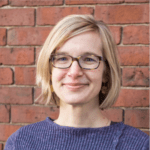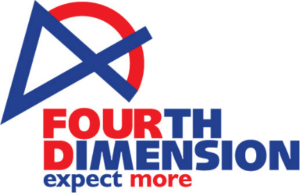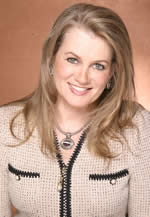
Misty McLaughlin & Alice Hendricks: Communications & Development Teams Working Better Together
Misty McLaughlin and Alice Hendricks close our 2023 Nonprofit Technology Conference coverage, as they reveal how these two teams can avoid the common conflicts and tensions, to come together collaboratively. They’re the principals and founders of Cause Craft Consulting.


Listen to the podcast
Podcast: Play in new window | Download
Get Nonprofit Radio insider alerts!
I love our sponsor!
Donorbox: Powerful fundraising features made refreshingly easy.
We’re the #1 Podcast for Nonprofits, With 13,000+ Weekly Listeners
Board relations. Fundraising. Volunteer management. Prospect research. Legal compliance. Accounting. Finance. Investments. Donor relations. Public relations. Marketing. Technology. Social media.
Every nonprofit struggles with these issues. Big nonprofits hire experts. The other 95% listen to Tony Martignetti Nonprofit Radio. Trusted experts and leading thinkers join me each week to tackle the tough issues. If you have big dreams but a small budget, you have a home at Tony Martignetti Nonprofit Radio.
View Full Transcript
Processed on: 2023-07-14T17:51:38.366Z
S3 bucket containing transcription results: transcript.results
Link to bucket: s3.console.aws.amazon.com/s3/buckets/transcript.results
Path to JSON: 2023…07…649_tony_martignetti_nonprofit_radio_20230717.mp3.293455570.json
Path to text: transcripts/2023/07/649_tony_martignetti_nonprofit_radio_20230717.txt
And welcome to tony-martignetti non profit radio, big non profit ideas for the other 95%. I’m your aptly named host of your favorite abdominal podcast. Oh, I’m glad you’re with us. I’d suffer the embarrassment of mono aphasia if you uttered the word fail because you missed this week’s show. Here’s Kate, our new associate producer just promoted from announcer with highlights of this week’s show, Kate. Congratulations on your promotion. [00:01:13.64] spk_1:
Thank you, Tony. I’m happy to be here and now communications and development teams working better together. Misty mclaughlin and Alice Hendricks close our 2023 nonprofit technology conference coverage as they reveal how these two teams can avoid the common conflicts and tensions to come together collaboratively. They’re the principals and founders of cause craft consulting on Tony’s take two. [00:01:15.88] spk_0:
I finally have someone to blame. [00:01:20.84] spk_1:
We’re sponsored by Donor box with intuitive fundraising software from donor box. Your donors give four times faster helping you help others. Donor box dot org. [00:01:34.89] spk_2:
Welcome to tony-martignetti non profit radio coverage of 23 NTC 2023 nonprofit technology conference in Denver, Colorado, where we [00:01:49.07] spk_0:
are sponsored by Heller consulting, technology [00:01:50.04] spk_2:
strategy and implementation for nonprofits with me now at the, at the conference are Misty mclaughlin and Alice Hendricks. They are both principles and co founders of cause craft consulting, Misty. Welcome back. [00:02:08.19] spk_3:
Welcome to non profit [00:02:09.04] spk_4:
radio. [00:02:10.13] spk_2:
Pleasure to have you both co founders, the [00:02:11.96] spk_3:
principles. Thank [00:02:18.51] spk_2:
you. Your session is communications and development team working better together. Alright, Alice, since you’re the first time non profit radio, why don’t you give us an overview of what’s, what’s out there between these two teams and why this is important, [00:02:47.95] spk_4:
you know, tony, it’s a really important topic because over the 20 years that I’ve been in the sector working on both development and communications teams projects from a technology perspective, we’ve noticed that there’s often inherent conflict between those two teams primarily because their mission are very different. Development departments need to raise the money, communications departments need to get the word out and so nobody is doing anything wrong. They’re all living their jobs in the right way, doing the right thing. However, because of the inherent conflict, friction occurs between people and teams often don’t get along. They fight over resources, they don’t have good processes and that can lead to a feeling of discord between staff and organizations. [00:03:17.40] spk_2:
Interesting. Okay, I, I was very interested to read this uh because I’ve not, I’ve not seen this but I’ve been a consultant for so many years. Um you know, I could see why I wouldn’t, I wouldn’t know about it. I do plan giving consulting. So that’s a narrow niche within one of the two silos we’re talking about, well, hopefully not silos within one of the two teams that we’re talking about, you know, in development. Um So, yeah, I’m not aware of that, Misty, how does this conflict sometimes play [00:04:06.19] spk_3:
out? Well, Tony, that’s a great question. So, um we have been seeing it for years but then we saw an article a few years ago in the Chronicle of Philanthropy kind of talking about what the implications of this phenomenon are because it is kind of, I think it’s reasonably well acknowledged that this happens sometimes to the point that those two teams don’t work together at all. And so you have kind of two separate pieces and they just decided we’re not going to work together. And then there are times that it’s actually a [00:04:12.09] spk_2:
disaster. We can’t raise money if we can’t get the message [00:04:25.54] spk_3:
out. Exactly. And we can’t, and we can’t get the message out if we don’t have that kind of core audience on board. Right? I mean, fundraising represents a significant audience of importance for the organization. So the Chronicle of Philanthropy did a piece about this and then we just continued to see it, continue to see it, see it play out in all these ways. And we decided to do some research about this. So our session is actually kind of presenting some of the results of that research. We heard from 85 organizations about what this looks like in their organizations and how it plays out from, I would say dynamics that are mildly ineffective and involve some minor friction to complete breakdowns. [00:04:50.06] spk_2:
We’re not talking to each other. We’re not, we’re not going to send your messages or we’re not going to support your message. Support your messaging. [00:05:14.57] spk_3:
Exactly. Or we’re going to circumvent the approval process and we’re just gonna send something out before you can stop us. And if it contradicts the mission or it contradicts, for example, like a shared messaging hierarchy. Oh, well, as long as I got my message to my audience and it happens on both sides, it’s no one’s at fault. I mean, people really in general, people aren’t devious, they want to work together. They sometimes just can’t figure out exactly how to make that happen. Um And then, you know, often what is just a kind of personal conflict blows up to be something happening more at a team level or more at the departmental level, leaders have a huge role to play in this. And if two leaders between those two departments don’t get along, it’s difficult for staff to kind of figure out how to navigate the [00:05:39.74] spk_2:
President’s or something. Exactly. Um Is there uh do either of you have, well, you work, you work in the same company, you know, all the same, you have the same clients? I mean, is there a, I don’t mean to focus on the inflammatory. But is there, is there like a story of conflict, maybe, maybe like a good story of conflict and then later on, we could tell the epilogue where it came out, came out. Well, after cause craft consulting intervened. Is there a story like that? [00:07:14.95] spk_4:
Yeah, I mean, I think there’s lots of stories like that. What we see often dynamics that happen because of this is delayed getting emails out the door or vetting process is just it’s going to take me four days to get back to you to approve the content or choose the photo or complaints about just the lack of collaborative working together. We also often see the leaders might not get along of these two departments, but staff themselves develop and forged relationships of trust amongst each other, which is great. You really want to have good, strong personal 1 to 1 relationships. In fact, in our research results, one of the ways that we saw people who responded, that mitigate the fact that the teams themselves weren’t getting along is that just they made friends with someone on the other team so that they needed a file update or some piece of collateral, they would ask their friend, which is wonderful because you have a trusted friend. But for us as process design consultants, we see that as a dysfunction, we see that as a lack of people really understanding what their role is, who’s supposed to be doing what, what lane they should stay in, what you can expect from someone and another team. So the really the solution to all of this is good, strong leadership, building trust and good process. So everyone is clear about what you’re supposed to do, what happens next and that helps mitigate the conflict. But yeah, I mean, it can be very hard to work in an organization where you don’t get along with others. [00:08:56.77] spk_3:
One organization that we came across the international relief organization, so obviously a big part of their, their work is fundraising and engagement went in times of crisis, right. So rapid response, emergency response is huge for them. And it’s kind of the core source of their fundraising. Um the development department in the communications department sort of went through this period of years where they just couldn’t figure out how they were going to message in these moments and it would sort of be a simmering tension. Um And when it was a non conflict, exactly, it’s a core function of the organization. And so it would be a kind of a problem, but they would sort of come to some sort of agreement, but then a crisis would happen and they couldn’t get a message out the door in order to be able to fundraise around that message. And so they would miss the moment again and again and again, in these moments that they should have been coming together and pulling together as a team. So in that case, they brought us in to say, how can we get these two teams to work together? We want a message and comply completely different ways, particularly in these moments of crisis, we want to use the channels. So the digital channels, in particular, with this kind of hot spot of, well, who’s going to say one, an email and who gets to press the send button, who gets to have the final word on how we’re going to talk about this. Um And we went through a whole initiative to try and solve this and get them talking to each other. And it was a lot about getting them to use the same language and recognize each other’s expertise that they just come from different worlds. Somebody who responded to our survey said, communications is all about saying what the message that the organization needs to get out and development is all about trying to say what the donors want to hear. And those are just two completely different worldviews. And so when you can put those together and say, where’s the common ground in this? How can we represent our organizational priorities? And at the same time time, really translate that to words and language that really resonates with donors and causes them to act. [00:09:47.72] spk_2:
Okay. So let’s start to get to some specifics that we can, we can recommend if you are uh suffering the symptoms that the two of you were talking about 55 minutes ago um disharmony and yeah, antagonism, frustration. All right. Um because we’re, we’re, we’re, yeah, we’re striving for harmony. We’re gonna leave disharmony behind and striving for harmony. Alright. Um you talk about a clear message prioritization, so deciding in advance, I guess this instead of me trying to guess Alice or Misty, you’re better. Alice is waving to Misty. So different [00:10:11.08] spk_4:
in terms of doing a content strategy where it’s clear about what we’re trying to do and having things planned in advance. So we know what, how we will behave in any given situation. It’s governance, it’s a process governor project of understanding when this crisis is going to occur. If you’re an international relief organization and there’s a tsunami, what do you do having those plans already laid out? So it’s clear about what you’re supposed to do, what the other people on what other team is supposed to do. And that’s a process design. In our research we asked, is there any governance over the messaging? And most of the respondents said no, there might be some process or a shared calendar, but we really don’t have a way of knowing how to behave when something happens. [00:10:40.61] spk_2:
Okay. What does this governance look like? [00:11:39.72] spk_3:
That’s a great question. So governance can happen at a lot of a lot of different points in working together a lot of different points in that sort of relationship life cycle. So for example, when you have a project, making sure that if those teams are gonna be working together on, for example, a campaign or a long term body of work, or maybe there’s a new programmatic area that’s rolling out. You always start with a tool like a project charter or terms of reference as an international organizations, they call a charter terms of reference. Um But the idea is that you’re so together and you’re saying, okay, how are we going to talk about this? What is our organizational positioning, not just messaging but positioning? What is our relationship to this thing that’s happening part of the social problem? What’s our unique value proposition? And how are we comfortable talking about this as an organization? How are we not? That’s the content strategy piece that Alice was speaking to? What do we think the best channels to do that? And how when something happens around this, when there’s a big news event, when there’s something to respond to, how are are we going to work together? And that’s, you know, forever, how are we going to work together? But in this specific case, on this topic, how are we going to work [00:11:46.52] spk_2:
together these workflows, workflow process? Exactly. All shared and agreed in [00:12:32.68] spk_3:
advance. Exactly. And that everybody on the team knows, right. It’s not just an agreement that two leaders make everybody, individual contributors need to understand what they’re supposed to do. How do they feed into the system overall? So that they’re working hand in hand together. And a lot of the time, there are certain teams, for example, digital teams, they are forced to operate between communications and fundraising wherever they sit there, controlling channels that all these different parts of the organization need to use a lot of the time. That’s a starting place for forming some shared working agreements or some principles that are used in moments like this. There are a lot of other tools to. So for example, she calendars so that there is one shared view of every external communication that’s happening, whether it’s a fundraising ask or it’s a media piece coming out or it’s some sort of campaign, broad marketing campaign that there is one shared view and everyone gets a view of the whole of what the audience is seeing instead of a kind of micro departmental specific view, [00:13:00.50] spk_2:
other other other processes that you can share that. Yeah. [00:13:24.31] spk_3:
Yeah. So we have a whole list in our presentation of hard tools and I would say something like the calendar and the workflows, those are hard tools. Um There are also soft tools and I will just say for fairness purposes, these soft tools like work in any two departments that are having a breakdown. We were here two years ago where we were online two years ago at NTC talking about fundraising and it teams and frictions between those teams. There are lots of places, obviously, it’s not just limited to development and communications. But some examples of some of the soft tools would be um you know, doing shared planning activities. So doing your annual annual plans together, not doing separate departmental plans but saying, what do we want to accomplish this year? What does that look like? [00:13:48.11] spk_2:
It’s an outside consultant? So what do I know from collaborative calendars? I thought, I thought this especially communications and fundraising. I would have thought that this was all happening. [00:15:03.09] spk_4:
Think about even pre internet fundraising departments were doing plan giving major gifts and direct mail and they were doing their own thing and direct mail is kind of its own bespoke thing. It’s still kind of done the same way. It was about 25 30 years ago, right? When you enter, when all of a sudden digital happened, everyone, the the email list is really a file of all the supporters. Communications often feels like there’s an audience about just awareness and brand engagement and marketing and all I want to do is engage those supporters in that way. Development looks at that list and says these are prospects or they’re already donors that I need to feed and nurture. And so part of it was the shared technology often created the conflict around who’s list is who’s who gets to message to who about what message, right? So what is the content of the message that’s a fundraising message versus a educational message or what the organization is? Doing the part of that has been, I think that most of the conflicts are around ownership of the odd, they believe they have different audiences. But supporters of an organization don’t have a hat on and say, I’m a donor or another hat on and say, oh, I’m interested in this content. That’s not how it really works. But that shift is slowly happening and we’re seeing more collaboration around that because of the proliferation of channels that everyone is engaging on social email. [00:15:52.01] spk_2:
What’s your advice around who should be in these conversations were doing the annual calendar? Is it I imagine it’s not only the two heads of the of each team, but how deep do we go to every, all the members of each, both teams? I mean, our listeners are small and midsize nonprofits. So we’re not talking about 25 person fundraising or communicate, but still there could be six or eight people on each or even combined. What’s your advice around? Who [00:16:40.93] spk_4:
does this planning? Transparency is super important especially to employees now, you know, where we live in an age where feeling aligned with the mission and your work and coming to work and really having a good experience at work is very helpful. So our advice is usually be as inclusive as possible with everyone who can participate in a planning exercise. Bring them in because you know, we live in an age where people are quitting and quiet, quitting and if you live, if you are working in an environment where there’s tension with other teams, that’s a good sign. That’s a problem. I mean, it might be a retention issue there for organizations. So when you do strategic planning together or redesigning a process or anything that will enable a change to happen, it’s, it’s best to be as inclusive as possible. [00:16:45.92] spk_2:
Or, or if everyone is not included in the actual meeting, then bringing it back to your team incrementally. It’s not like it’s all going to be decided in a 90 minute meeting, bring it back feedback, representing that feedback to the, to the working group or the [00:17:01.53] spk_4:
collaboration. [00:17:10.59] spk_2:
Okay. Okay. Um Anything else we should be talking about work processes planning besides, well, you were starting to talk about soft, you didn’t, you didn’t, you didn’t really flesh out. We got digressed, digressed you into more discussion of the hard tools, lackluster, you’re suffering a lackluster host. [00:18:53.56] spk_3:
There’s a lot, there’s a lot and this is I think where I was going with that was to say these are tools that work in other breakdowns, they work in any breakdown in the human system. But for example, saying we’re taking the whole team away twice a year for one day or two days. And that means development and communications. That might also be a marketing group that might also be a digital team or it might be sub working groups, but we’re going to do these two day intensive retreats where we really try and understand each other’s expertise and map solutions together and those could be processed solutions or that could be campaign planning. It could be anything, it could be exploring new audience opportunities um There and there’s all of the piece we’ve just heard so many clients say this year, you know, this wasn’t working well before the pandemic, but now we’re just broke down by the side of the road. Our ropes have frayed between these two teams and even within our own teams, we’ve on boarded new staff, they’ve never met each other. And so what is it that we’re going to do? So understanding, for example, when you need to pick up the phone, when email is not enough, our slack is not enough, texting is not enough. We need to actually pick up the phone and work together in a human way towards a solution. Um That, that those kinds of pieces as obvious as it sounds, they’re not pieces that people have necessarily incorporated into their ways of working, particularly younger staff. So understanding that there’s a whole range of those kind of tools that you can use um and sort of working norms that you can establish with those teams if you were a leader or even just a manager of a small team. I think one of the most interesting things we found in this survey is that this tends to be less of a problem at small organizations, particularly when you have like a one person development and communications team, you have to work together. You don’t have a choice. This is a problem that happens often with growth and scaling that relationships that once worked. It’s just harder to figure out how to do that. The more humans you have in the [00:19:17.28] spk_2:
mix retreats. Plus there’s social time built in. What about? It cannot be a soft tulle, just social time that we’re not doing any planning. But we’re doing, I don’t know, you know, one of the mystery, one of the mystery places, solve the murder mystery places or, you know, whatever or just drinks a game room. Yeah. Yeah. Right. Just get to know each other outside our, our marketing and communicate. [00:20:04.70] spk_3:
This can be very social. But the idea of like after we do something, we have to do some retrospection together, I think that often gets lost in these teams because people are moving so fast, you move from one campaign to the next campaign to the next ask. And now so many teams have the data to sit down together after doing something, even something that maybe didn’t go very well and saying, well, what worked here? Is there something we can learn together and kind of using the data is a way to have an independent objective view. You can all analyze together and say, what does this mean for the future? How do we do it? And you can do those in a fun social way. It doesn’t have to be a boring, sort of like. Now we’re going to do a postmortem and we’re all going to look at it. You can, you can sort of make this a part of the way that you work together. [00:21:13.56] spk_1:
It’s time for a break. Donor box. It’s the fundraising engine of choice for 50,000 organizations from 96 countries. They’ve got something new. Now, you can accept cashless donations anytime and anywhere with donor box live kiosk, turn your ipad or Android tablet into a kiosk to boost in person giving. And with their new additions to donor box events, you can sell tickets in 43 currencies and ask buyers to cover fees. Put these two together and you’re in person events will take off donor box helping you help others. Donor box dot org. It’s time for Tony’s take two. [00:21:16.08] spk_0:
Thank you, Kate. How, how are you? [00:21:18.85] spk_1:
I’m doing well. How are [00:22:58.51] spk_0:
you? Uh, I’m great. I’m great. I’m glad you’re with us. And, uh, and congratulations again on your promotion. That’s so, that’s Kate. She’s not an intern. She’s our associate producer, but I have someone I can blame. Now, I’ve been saying for years, where’s the intern? Yeah, I wish I had an intern every time I make a mistake who would say who writes this crappy copy? I wish I had an intern to blame. Well, I don’t have an intern but I have an associate producer now, I have an associate producer that I can blame. It’s beautiful. So, any flubs? Well, I’ll just leave them at flubs. I won’t go more, uh, I won’t be more extreme with another F word with any, with any, with any flubs. I’ve got an associate producer that is now going to be responsible. I’m thinking this, this is today’s news. I’m just thinking, I’m glad that Kate is not a member of Sag after yet. Otherwise I would have lost her. She’d be, be on the line so we wouldn’t have her but not a member yet. It’s relieving. It’s sort of, there’s a burden lifted from my shoulders that I no longer have to bear the responsibility of my own mistakes. That’s the beauty of it. I don’t have to be responsible for my own flubs any, any longer. Very relieving. That is Tony’s take two. [00:23:20.68] spk_1:
Not what I was expecting and I’m not sure what I’ve gotten myself into here but whatever we’ve got just about a butt load more time now. Back to communications and development. Teens working better together. Hmm. [00:23:23.89] spk_2:
Where else should we go with the topic? We still have some time together. You know, we haven’t [00:25:24.42] spk_4:
talked about yet when you, if there’s something broken that needs, that needs healing, you know, you think about these conflicts in any, whether it’s between communications and development, between it and development, any kind of processes that are broken and cause frustration and friction within teams. It’s useful to have another event happening and that needs change and then you can overlay process improvement during another change. So a good example that we often find is that if someone is migrating from one software tool to another, it’s a great opportunity because people are going to use a different technology when they come to work every day. The common thing between development departments and communications departments is that they all use digital tools. They use CRM S, they use email marketing tools, they are always tied to technology. And so if the technology is changing, it’s a great opportunity to think about what role do we need doing? What activity in this tool? And then you can take that one step further and say, how should all these roles work together? What’s the workflow? What’s the process here? Who’s supposed to be doing what and what you find in a lot of organizations is there’s a often individuals that they’re just willing to learn everything. So they’ll take on any project and they can use the tools really easily and they end up doing more than their job description, then you have others who just really don’t, don’t have their role clear about what they’re supposed to be doing. So you have an opportunity in something as, as something like a CRM migration. You can also take a look at the staffing and the staffing structure and the processes and improve some of these frictions almost under the guise of as we go through this technology migration. Let’s take a look at how we’re actually doing our work and that’s useful because sometimes new technology has different features. So you need a skill set of a subject matter, expert in a purse skill. How did that person fit in? Which means how to other people’s jobs change. So if you look at the human component around technology [00:25:40.50] spk_2:
and sometimes technology is not the sole solution, the people in the processes could very well be contributing to the to the problem that we’re looking for the tech to solve. [00:26:22.77] spk_4:
Usually the text, I would say almost all the time when we hear about a technology problem, the technology is working as intended. It’s a people and process and workflow problem. Sometimes tools are older and they need to be renovated or an organization has developed a new strategy, an organization that mostly does touch engagement or gets corporate gift or grants wants to start a mass marketing program. They need technology that can better accommodate those different strategies. Those are all opportunities to stop and look at process. How are we looking, how are we working together? What organizational structure do we have? Is everybody is or do we have all the right roles in our team? And it’s a great opportunity, we find that a lot of the time we do a lot of change management and process design around the human component of the technology and it really has nothing to do with the tech itself. [00:26:34.31] spk_2:
Is there another example, Alice that you can share around an event that merits this this kind of attention and planning and introspect. Really, it’s introspection, I think its organizational introspection, something else non tech [00:27:33.47] spk_4:
oftentimes a new leader will come in so a new leader can come in and have a new idea or a new program. Like the example of now we’re going to start doing a new strategy. So any type of external force of change, if there’s a moment of critical change, that requires the opportunity to take a step back and look at how things are working. You’re absolutely right. It takes a very self actualized executive director to say here, I’m getting complaints from my development director and complaints from my communications director. I need to bring in an outside consultant and figure out a better process so people can work together. That doesn’t often happen. Usually there’s some other pressing external event like a new person comes in, who’s a leader, a new development director and director and executive director who says, wait a minute, this doesn’t seem right. Why are people complaining and not getting along? Let’s take a look at that or it’s a technology thing. It’s like our tools aren’t working together. [00:27:58.51] spk_2:
Okay. That was a good example. Thank you. Alright, cool. I’ll put you on the spot. Thank you. All right now. You’re cause craft consulting, you’re not flustered. I, I put you on the spot and you rose to the moment. Of course. What is no surprise, surprise? Yeah, that’s right. All right. Um We still have some time if there’s other stuff you want to, we talked through your three learning objectives, stated, learning objectives for the, for the session. But what else, what else you’re gonna share with folks that we haven’t talked about? Maybe we [00:28:11.46] spk_3:
could talk a little bit about our survey results. Um I think we learned some [00:28:14.54] spk_2:
more motivation type. Okay. [00:28:57.93] spk_3:
Well, one of the things we asked about values beyond motivation, beyond motivation. Uh the subject of structure because we were, we were curious about and we have observed a lot. It’s not a perfect structure that perfect organizational way of structuring this work of these teams that works well every time. But what we really noticed is there are big differences in the way that these breakdowns happen that are a result of structure. So when you have a development in the communications team and one department, it’s not that that’s a perfect structure. It’s just harder to have a lot of conflict where people don’t work together, right? But as an organization grows, you tend to have two separate functions, people specialize and they pull apart. That’s one moment where a lot of conflicts can happen. Um where digital lives in an organization that’s a big differentiator in terms of. So if digital lives in communications. Sometimes there’s a real breakdown between development and calms. Digital are the ambassadors that go back and forth and the emissaries between those teams and are the ones that are trying to connect the ropes. Even when those [00:29:17.95] spk_2:
earlier you said something similar. Yeah, [00:29:27.92] spk_4:
they have to be the mitigators, you know, they have to, they’re getting the pressure from both sides and they actually have to serve both departments. So oftentimes the attitude and approach the digital team can be one of either exacerbating conflict or bringing people together. [00:29:32.93] spk_2:
What about the existence or not? Of the same leader over two different teams. So, but they’re not the same team, they’re two separate teams but same director or vice president. Does that, does that make a difference in terms of likelihood or not of conflict? That’s a good [00:29:57.92] spk_3:
question. I would say it depends sometimes that leader themselves really has a career that aligns with one function or another. We’ve seen, I have an exam recently, the department that its development in communications, but the leader is really a long term career fundraiser and communications. A little left out. It’s like kind of a child that has the parent that’s really aligned with the other child. So if you have a strong leader who equally invested in both sides and really thinks from the perspective of both sides that actually can work very well as a structure, we’ve seen a lot of that [00:30:28.41] spk_2:
interesting because they come from a background of one of the other. So they’re going to be much more fluent with one function. [00:30:51.56] spk_3:
Exactly. As something else we saw that I thought was really fascinating. Is we asked how many of these organizations have a dedicated marketing or engagement team that’s not exactly calm and it’s not exactly development. It’s a marketing function and a huge portion. I think almost 70% said that they have marketing teams when we would have these conversations 10 years ago. Marketing, it’s still a very dirty word in organizations. If you said marketing people would say, well, I’m a nonprofit. We don’t do marketing that’s changed hugely railed [00:31:14.88] spk_2:
against that, but I always bristled against that, but it has changed, it has changed marketing and promotion. Now we talk about promotion. Promotion used to be sales promotion, like selling lay’s potato chips at a point of sale, you know, in a supermarket that was sales promotion. Uh You know, we’ve, we’ve there are things we can learn from the for profit sector, right? Everything corporate is not dirty. Exactly and marketing and promotion, I think are [00:31:41.11] spk_3:
examples and marketing. A lot of those teams see themselves as engagement functions as thinking across all the ways that an organization might engage and thinking about the full funnel, the kind of full end to end relationship even for non donors, like volunteers, activists. Um lots of other folks, service recipients even, how do they play into the way the organization needs to be engaging them. Well, the [00:32:46.09] spk_4:
for profit world has kind of nailed this with the idea of customer experience management. Now you have big companies that have CX. So when you think about the donor experience or the supporter experience, thinking about it, from that perspective, it’s about the curation of an entire holistic experience. The for profit world has nailed that when you, it’s, it’s important to actually for all of the teams to consider their audience as one audience. And how do we, what do we want that experience of our audience to be? And that like I said before, you don’t put your hat on as a donor and a hat on to someone else. So thinking from all of the new knowledge we have from customer experience management, applying that to how we’re going to engage our supporters. We have seen organizations combine their development and communications teams like you said before into a public engagement, um External affairs, other names of teams that have a single leader, the benefit of that is also there’s a single source of making a decision or setting priorities, which is really helpful to have right now, the teams have competing priorities and there’s no arbitrator besides maybe the executive director or the executive committee to say yes, we’re going to focus on this and we’re not going to focus on that. We talked [00:33:07.22] spk_2:
about message prioritization, okay. Right. Single single decision maker. Alright. Anything you want to leave us with, I let Alice open. So Mr, you want to leave us with something harmonious and uplifting, empowering [00:33:17.27] spk_4:
the harmonious and uplifting, encouraging, [00:33:19.09] spk_2:
encouraging, and empowering. [00:33:57.97] spk_3:
Well, one of the things that gave me great relief in analyzing the survey results was to realize that I think most people know that these two teams actually have more in common than many of the other teams in the organ. There are some natural points of harmony built in. They both really care about results and outcomes. They are very focused on reaching audiences. They think from outside in and not just an inside out perspective. And by that, I mean, they think about these audiences and what do these audience needs. They’re curious about how to reach them, they want to message right and represent the organization, well, they want to get it right. And they see themselves as bro the work of the organization to the world at large, making it relevant and meaningful. So there’s a ton of common ground. I think that just gets obscured a lot of the time by these persistent thorny dynamics. And when you can help people to see the common ground, people are relieved and excited to work together almost universally. We’ve seen that over and over again. The will is there people just sort of need to be given permission and shown the way [00:34:26.58] spk_2:
Mr mclaughlin Alice Hendricks, both principles and co founders of cars, craft consulting. Thank you very much. Thank you. Thank you, Mr. Thank you Alice and thank you for being with nonprofit radio coverage of 23 nt. See where we are not sponsored by lay’s potato chips. Even though I gave them a shout out, we are sponsored, in fact by Heller consulting, technology strategy and implementation for nonprofits. Thanks for being with us [00:35:02.90] spk_1:
next week giving circles with the woman who popularized them. Sarah Llewellyn. If you missed any part of this week’s show, [00:35:06.21] spk_0:
I beseech you find it at tony-martignetti dot com. [00:35:25.10] spk_1:
We’re sponsored by Donor Box with intuitive fundraising software from donor box. Your donors give four times faster helping you help others. Donor box dot org. Our creative producer is Claire Meyerhoff. I’m your associate producer, Kate martignetti. This show, social media is by Susan Chavez, Mark Silverman is our web guy and this music is by Scott Stein. [00:35:51.75] spk_0:
Thank you for that affirmation, Scotty be with us next week for nonprofit radio. Big non profit ideas for the other 95% go out and be great.


 There’s a nonprofit life cycle with recognizable stages. At each point, you need to align your goals, plans and actions with the stage you’re in.
There’s a nonprofit life cycle with recognizable stages. At each point, you need to align your goals, plans and actions with the stage you’re in.  One size fits all rules may not make sense for your board, especially if you’re embracing diversity and equity in board membership. Our guest, Judy Levine, is a longtime board coach, trainer and consultant, and she leads
One size fits all rules may not make sense for your board, especially if you’re embracing diversity and equity in board membership. Our guest, Judy Levine, is a longtime board coach, trainer and consultant, and she leads 

